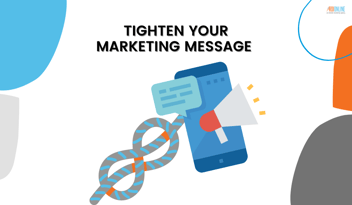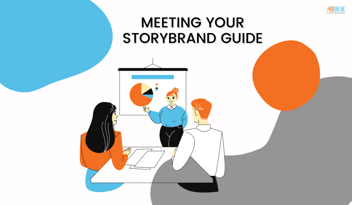How to Apply The Storybrand Marketing Roadmap to Your Business
Have you ever felt like you're just spinning your wheels when it comes to marketing your business? You're not alone. A lot of business owners feel lost when it comes to marketing, and it's easy to understand why. After all, there are so many different ways to approach marketing, and each one seems to promise the moon.
What if there was a roadmap that could help you navigate the waters of marketing and get results? Well, it's called The Storybrand Marketing Roadmap. In this post, we'll take a look at what The Storybrand Marketing Roadmap is, and how it can help you achieve success with your brand.
What Is The StoryBrand Marketing Roadmap?
The Storybrand Marketing Roadmap is a step-by-step guide for growing your brand and reaching more customers. It has been developed by Donald Miller, author of Building A StoryBrand: Clarify Your Message So Customers Will Listen.
Miller developed this roadmap after working with hundreds of businesses to help them grow their brands and sales using story marketing. He found that when companies applied these three basic steps, they were able to put themselves on the map and connect with their customers in a way that felt natural and easy for everyone involved.
Step 1: Discover Your Core Message
The first step in The Storybrand Marketing Roadmap is about discovering what your company's core message is. You've probably heard the term "core message" before. This is what you want your company's core message to be: it's a one-liner that explains your company and its purpose in the simplest way possible.
For example, Trump Tower—a luxury hotel and condo building in New York City—might have a core message something like "Where Luxury Lives."
By coming up with a great core message, you can future-proof yourself against trends, fads, and any changes that might happen in the market or behind the scenes at your business. Instead of trying to change everything every time something happens (and potentially losing customers along the way), this approach allows you to hone in on exactly what matters most about your company and why people should care.
Step 2: Make Your Core Message Clear With Messaging Drivers
Once you've defined your core message, the next step is to make it clear with messaging drivers. These are action words that show people exactly what it is they'll be getting when they choose to do business with you—in other words, they're specific objectives that help companies clarify what they stand for and how it plans on achieving their goals.
For example, if Trump Tower had messaging drivers like "Luxury Living" and "An Exceptional Experience," people would know right away that the building offers upscale living. It's not just about having a nice place to live; it's about creating an exceptional experience.
The Story Marketing Roadmap suggests that you clarify your core message into a simple statement that cuts through the noise of marketing messaging and gets right at what matters most. You can include your core message in your messaging drivers, along with any other key terms that provide a clear message about what you do.
Step 3: Put Your Brand Into Action With Story Marketing Elements
Once you've defined your brand's core message and made it clear with messaging drivers, the third step is to put it into action with story marketing elements—visuals or tools that make people feel like they're experiencing something, rather than just reading information on a website or in an ad.
For example, if Trump Tower used ballroom dancing for one of its visual storytelling elements, that would show off luxury living by having the doorman dance with guests as they arrived. The Storybrand Marketing Roadmap suggests more storytelling elements like this, each one allowing you to tell your brand's story in a unique way that connects with consumers and brings it to life.
How Can You Apply The Storybrand Marketing Roadmap?
Once you've finished all three steps, you can apply it however it makes sense for your company—and whatever works best for communicating your core message to customers. For example, Trump Tower could use some of its messaging drivers as ads or tweet copy so people know what an exceptional experience comes with living there. This might also translate into sales material or even part of the welcome video shown on the website.
Some other ideas include personalizing your marketing collateral or creating a website that showcases what it's like to live in Trump Tower. The Storybrand roadmap is flexible; the only thing you have to make sure of is that each element connects with one another and tells a story about your brand.
Let's break down this roadmap into actionable steps. Let's start with the first one here:
Create a One-Liner
The Storybrand marketing strategy is about more than just great content. It's also about including all of your marketing materials into one cohesive story structure. And if you want to create a good one-liner, here are a few tips to get you started.
- Start with your character. If you have a StoryBrand BrandScript, this should be easy to define. Ask this question about your brand:
"Who's it for?"
- Lean with the problem. What kind of problem does your customer have? Ask this question about your brand:
"What's it for?"
- Give them a plan. Set the proper expectation by letting them imagine how they can achieve the success they want to have. Ask this about your brand:
"How's it going to work?"
- Finally, give them a picture of success. Paint this picture by asking this question about your brand:
"What will life be like after they choose your brand?"
Try answering these questions as briefly as possible and start writing your one-liner.
Having a good one-liner is an effective way of communicating your brand message to potential customers. In copywriting, a one-liner is defined as a simple sentence composed of a few words. The idea behind this marketing tool is to get the main message across in an easy-to-digest format.
In today's fast-paced world, people have little time for copy that takes too long to read or understand. When you use copy that has been stripped down into just the essentials, then your potential customers are more likely to pay attention and understand what you are trying to say. With clear copy, it becomes easier for you to connect with new audiences on their level.
Why Write One-Liners?
To begin with, having a good copy makes your marketing material feel professional. Clear copy communicates who you are as a business without wasting paper. Furthermore, copy that is concise allows you to explain your product or service in just a few seconds. By using copy that flows well and does not drag on for too long, then your copy will be easy for anyone to read.

Generate Leads
In the sales funnel, the first step is to generate leads. This starts with a compelling headline and a few useful or valuable points at the beginning of your sales letter. The sales copy will continue building trust, demonstrating credibility, and focusing on how your product will solve the prospect's problem.
There are many ways to get prospects into your sales funnel: pay-per-click campaigns, search engine optimization, social media advertising, direct mail campaigns, affiliate programs or influencer marketing can all help drive attention toward your brand and grow your list of potential customers.
Once a lead has been generated it must immediately be put through a qualification process so that only high-quality leads are passed along to salespeople while salespeople waste time on sales leads that have no chance of converting.
As sales prospects continue through the sales funnel their interest in making a purchase will increase until finally, it flips from desire into demand when salespeople make contact for follow-up meetings. Demand is measured by companies who track website visits, clicks, views, and other metrics related to customer actions online.
At this point, salespeople can start sales conversations and reply to sales leads with personalized marketing campaigns. They use sales scripts and marketing automation to provide a carefully orchestrated sales experience in which each interaction is designed to convince the prospect of their need for your product.
When sales prospects become customers it's important that they continue into the post-sale funnel where marketers must ask permission to nurture, engage and sell products or services related to the initial purchase. Clients who buy more generate substantially more revenue than ones who only buy once - this is why nurturing them is essential after they initially convert.
Simplify The Effective Sales Funnel
The StoryBrand Marketing Roadmap simplifies the effective sales funnel by creating messages that invite your customer into a journey of transformation (the beginning of the sales funnel) where they are guided through the steps they must take to achieve the success they want to achieve. After they pay you for the products and services you're offering, the post-funnel process answers the question:
"Okay, I am satisfied with your brand. Now I want to tell my friends. What will I tell them?"
At this point, you have to nurture your customer with more stories and more messages that resonate with their problem and the problems that people like them have. The StoryBrand Marketing Roadmap turns the funnel into a story. Everyone wants to be the main character in their story. Almost no one wants to get sucked into a funnel.
Automate Your Marketing Collateral
One of the most cost-effective marketing strategies is automated marketing.
If you're into email marketing, for example, an automated sales letter casts a wide net and catches only your ideal customer.
These days, there are tools out there made to make marketing easier. If we want to be more efficient in delivering what our people want from us, we must utilize systems that serve our purpose. Marketing automation is one of them.
Using automated marketing means writing your automated emails to be sent out at predetermined custom-tailored times. You can use this strategy for various automated sales letters, depending on what you're selling, who you're selling to and how often they buy.
For example; if you sell pet supplies once a week, automated emails about new products or discounts would likely prove successful. If your brand is offering handmade items like wedding cakes or baby clothes, automated emails highlighting past stories might encourage repeat business from those happy customers as well as prompt referrals.
With marketing automation, you don't have to write a new email every time your customer decides to abandon his cart or just leave after browsing. Marketing automation tools help nurture prospects with the information they need and make the purchase decision easier by offering them simple steps and direct links to checkout.
Creating a system that serves you is now possible and reliable. It's the best time to show up for the people you serve!
Stories of Transformation
One of the most powerful forms of marketing message are customer testimonials. It helps establish your authority and empathy to the minds of customers.
You're inviting them into a journey of transformation, but they won't believe anything you say until they see proof - social proof!
The StoryBrand Marketing Roadmap can help you guide prospects through the transformation they're craving. People are constantly looking for ways to stay ahead in life, and StoryBrand marketing approaches tell us that the most effective way to capture their ever-elusive attention is to invite them into a story of transformation.
Referrals
The Storybrand Marketing Roadmap is a marketing strategy designed to increase customer referrals. The marketing roadmap provides implements for each step in the plan to ensure your marketing reaches its fullest potential. Implementing this marketing roadmap will help you grow your business exponentially through referrals, attract more clients naturally, and gain lasting referrals that turn into loyal customers.
One of the best ways to spread the word about your brand is through clear messaging, and it's exactly what the StoryBrand marketing approach is all about.
When it's easy to understand what you do and how you're going to help the people you serve, you're empowering customers to spread the word about your brand - it's that simple.
Apply These Principles to Your Business and Engage More Customers
Join the next StoryBrand Workshop and work with StoryBrand Certified Guides so you can start applying the StoryBrand Marketing Roadmap to your business.
Click here for more valuable information!
This workshop is not just a bunch of videos you sit through, it's a chance for you and your team to do the work that moves the needle for your business.
If you're ready to take your company to the next level this year, click on the button below.





